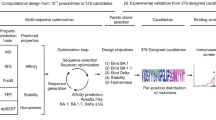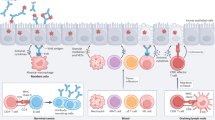Abstract
Quantification of human immunodeficiency virus type-1 (HIV-1) proviral DNA is increasingly used to measure the HIV-1 cellular reservoirs, a helpful marker to evaluate the efficacy of antiretroviral therapeutic regimens in HIV-1–infected individuals. Furthermore, the proviral DNA load represents a specific marker for the early diagnosis of perinatal HIV-1 infection and might be predictive of HIV-1 disease progression independently of plasma HIV-1 RNA levels and CD4+ T-cell counts. The high degree of genetic variability of HIV-1 poses a serious challenge for the design of a universal quantitative assay capable of detecting all the genetic subtypes within the main (M) HIV-1 group with similar efficiency. Here, we describe a highly sensitive real-time PCR protocol that allows for the correct quantification of virtually all group-M HIV-1 strains with a higher degree of accuracy compared with other methods. The protocol involves three stages, namely DNA extraction/lysis, cellular DNA quantification and HIV-1 proviral load assessment. Owing to the robustness of the PCR design, this assay can be performed on crude cellular extracts, and therefore it may be suitable for the routine analysis of clinical samples even in developing countries. An accurate quantification of the HIV-1 proviral load can be achieved within 1 d from blood withdrawal.
This is a preview of subscription content, access via your institution
Access options
Subscribe to this journal
Receive 12 print issues and online access
$259.00 per year
only $21.58 per issue
Buy this article
- Purchase on Springer Link
- Instant access to full article PDF
Prices may be subject to local taxes which are calculated during checkout





Similar content being viewed by others
References
Koralnik, I.J. et al. JC virus DNA load in patients with and without progressive multifocal leukoencephalopathy. Neurology 52, 253–260 (1999).
Blackard, J.T. et al. Detection of hepatitis C virus (HCV) in serum and peripheral-blood mononuclear cells from HCV-monoinfected and HIV/HCV-coinfected persons. J. Infect. Dis. 192, 258–265 (2005).
Fontaine, J. et al. High levels of HPV-16 DNA are associated with high-grade cervical lesions in women at risk or infected with HIV. AIDS 19, 785–794 (2005).
Shiramizu, B. et al. Circulating proviral HIV DNA and HIV-associated dementia. AIDS 19, 45–52 (2005).
Perrin, L. et al. Multicenter performance evaluation of a new TaqMan PCR assay for monitoring human immunodeficiency virus RNA load. J. Clin. Microbiol. 44, 4371–4375 (2006).
Highbarger, H.C. et al. Comparison of the Abbott 7000 and Bayer 340 systems for measurement of hepatitis C virus load. J. Clin. Microbiol. 45, 2808–2812 (2007).
Gueudin, M. et al. Differences in proviral DNA load between HIV-1 and HIV-2-infected patients. AIDS 22, 211–215 (2008).
Hatzakis, A.E. et al. Cellular HIV-1 DNA load predicts HIV-RNA rebound and the outcome of highly active antiretroviral therapy. AIDS 18, 2261–2267 (2004).
Halfon, P. et al. Real-time PCR assays for hepatitis C virus (HCV) RNA quantitation are adequate for clinical management of patients with chronic HCV infection. J. Clin. Microbiol. 44, 2507–2511 (2006).
Sarrazin, C. et al. Comparison of conventional PCR with real-time PCR and branched DNA-based assays for hepatitis C virus RNA quantification and clinical significance for genotypes 1 to 5. J. Clin. Microbiol. 44, 729–737 (2006).
Jungkind, D. et al. Automation of laboratory testing for infectious diseases using the polymerase chain reaction- our past, our present, our future. J. Clin. Virol. 20, 1–6 (2001).
Qu, L., Triulzi, D.J., Rowe, D.T., Griffin, D.L. & Donnenberg, A.D. Stability of lymphocytes and Epstein–Barr virus during red blood cell storage. Vox Sang 92, 125–129 (2007).
Henriques, I. et al. Prevalence of Parvovirus B19 and Hepatitis A virus in Portuguese blood donors. Transfus. Apher. Sci. 33, 305–309 (2005).
Schmidt, M., Roth, W.K., Meyer, H., Seifried, E. & Hourfar, M.K. Nucleic acid test screening of blood donors for orthopoxviruses can potentially prevent dispersion of viral agents in case of bioterrorism. Transfusion 45, 399–403 (2005).
Pennington, J. et al. Persistence of HTLV-I in blood components after leukocyte depletion. Blood 100, 677–681 (2002).
Wongsena, W. et al. Detection of HIV-1 window period infection in blood donors using borderline anti-HIV results, HIV-1 proviral DNA PCR, and HIV-1 antigen test. J. Med. Assoc. Thai. 80 (Suppl. 1): S112–S115 (1997).
Neal, T.F. et al. CD34+ progenitor cells from asymptomatic patients are not a major reservoir for human immunodeficiency virus-1. Blood 86, 1749–1756 (1995).
Douek, D.C. et al. HIV preferentially infects HIV-specific CD4+ T cells. Nature 417, 95–98 (2002).
Chun, T.W. et al. Gene expression and viral production in latently infected, resting CD4+ T cells in viremic versus aviremic HIV-infected individuals. Proc. Natl. Acad. Sci. USA 100, 1908–1913 (2003).
Biswas, P. et al. Expression of CD4 on human peripheral blood neutrophils. Blood 101, 4452–4456 (2003).
Morsica, G. et al. Natural killer-cell cytotoxicity in HIV-positive and HIV-negative patients with and without severe course of hepatitis B virus infection. Scand. J. Immunol. 62, 318–324 (2005).
Soulié, C. et al. HIV-1 X4/R5 co-receptor in viral reservoir during suppressive HAART. AIDS 21, 2243–2245 (2007).
Finzi, D. et al. Identification of a reservoir for HIV-1 in patients on highly active antiretroviral therapy. Science 278, 1295–1300 (1997).
Zhang, H. et al. Human immunodeficiency virus type 1 in the semen of men receiving highly active antiretroviral therapy. N. Engl. J. Med. 339, 1803–1809 (1998).
Chun, T.W. et al. Early establishment of a pool of latently infected, resting CD4(+) T cells during primary HIV-1 infection. Proc. Natl. Acad. Sci. USA 95, 8869–8873 (1998).
Pires, A. et al. Initiation of antiretroviral therapy during recent HIV-1 infection results in lower residual viral reservoirs. J. Acquir. Immune Defic. Syndr. 36, 783–790 (2004).
Hasson, H. et al. Favorable outcome of ex-vivo purging of monocytes after the reintroduction of treatment after interruption in patients infected with multidrug resistant HIV-1. J. Med. Virol. 79, 1640–1649 (2007).
Hughes, G.J. et al. HIV-1-infected CD8+CD4+ T cells decay in vivo at a similar rate to infected CD4 T cells during HAART. AIDS 22, 57–65 (2008).
Goujard, C. et al. CD4 cell count and HIV DNA level are independent predictors of disease progression after primary HIV type 1 infection in untreated patients. Clin. Infect. Dis. 42, 709–715 (2006).
Kostrikis, L.G. et al. Quantitation of human immunodeficiency virus type 1 DNA forms with the second template switch in peripheral blood cells predicts disease progression independently of plasma RNA load. J. Virol. 76, 10099–10108 (2002).
Désiré, N. et al. Quantification of human immunodeficiency virus type 1 proviral load by a TaqMan real-time PCR assay. J. Clin. Microbiol. 39, 1303–1310 (2001).
Higuchi, R. et al. Kinetic PCR analysis: real-time monitoring of DNA amplification reactions. Biotechnol. 11, 1026–1030 (1993).
Salvatori, F. et al. Semi-automated real time quantitative PCR of HIV-1 strains of diverse geographical origin. Fourth European Conference on Experimental AIDS Research (ECEAR), Tampere, Finland, June 18–21, 1999. Abstract Book, p. 112.
Bøgh, M. et al. Subtype-specific problems with qualitative Amplicor HIV-1 DNA PCR test. J. Clin. Virol. 20, 149–153 (2001).
Cunningham, P. et al. False negative HIV-1 proviral DNA polymerase chain reaction in a patient with primary infection acquired in Thailand. J. Clin. Virol. 26, 163–169 (2003).
Higuchi, R. et al. Simultaneous amplification and detection of specific DNA sequences. Nat. Biotechnol. 10, 413–417 (1992).
Lusso, P., Malnati, M. & Scarlatti, G. Method for the quantitative detection of nucleic acids EU Patent 1,131,466 (filed 17 Nov. 1999; issued 11 July 2007).
Acknowledgements
This work was supported by the WHO-UNAIDS Network for HIV Isolation and Characterization, which provided primary HIV-1 isolates through the WHO Repository at the Centre for AIDS reagents (CFAR), National Institute for Biological Standard and Control (NIBSC), South Mimms, UK, and by grants from the VI National AIDS Project, Istituto Superiore di Sanitá, Rome, Italy.
Author information
Authors and Affiliations
Corresponding authors
Rights and permissions
About this article
Cite this article
Malnati, M., Scarlatti, G., Gatto, F. et al. A universal real-time PCR assay for the quantification of group-M HIV-1 proviral load. Nat Protoc 3, 1240–1248 (2008). https://doi.org/10.1038/nprot.2008.108
Published:
Issue Date:
DOI: https://doi.org/10.1038/nprot.2008.108
This article is cited by
-
Direct translation of incoming retroviral genomes
Nature Communications (2024)
-
P-selectin glycoprotein ligand-1 (PSGL-1/CD162) is incorporated into clinical HIV-1 isolates and can mediate virus capture and subsequent transfer to permissive cells
Retrovirology (2022)
-
HIV-1 subtype C Tat exon-1 amino acid residue 24K is a signature for neurocognitive impairment
Journal of NeuroVirology (2022)
-
Mesenchymal Stromal Cells: a Possible Reservoir for HIV-1?
Stem Cell Reviews and Reports (2022)
-
Advanced baseline immunosuppression is associated with elevated levels of plasma markers of fungal translocation and inflammation in long-term treated HIV-infected Tanzanians
AIDS Research and Therapy (2021)
Comments
By submitting a comment you agree to abide by our Terms and Community Guidelines. If you find something abusive or that does not comply with our terms or guidelines please flag it as inappropriate.



